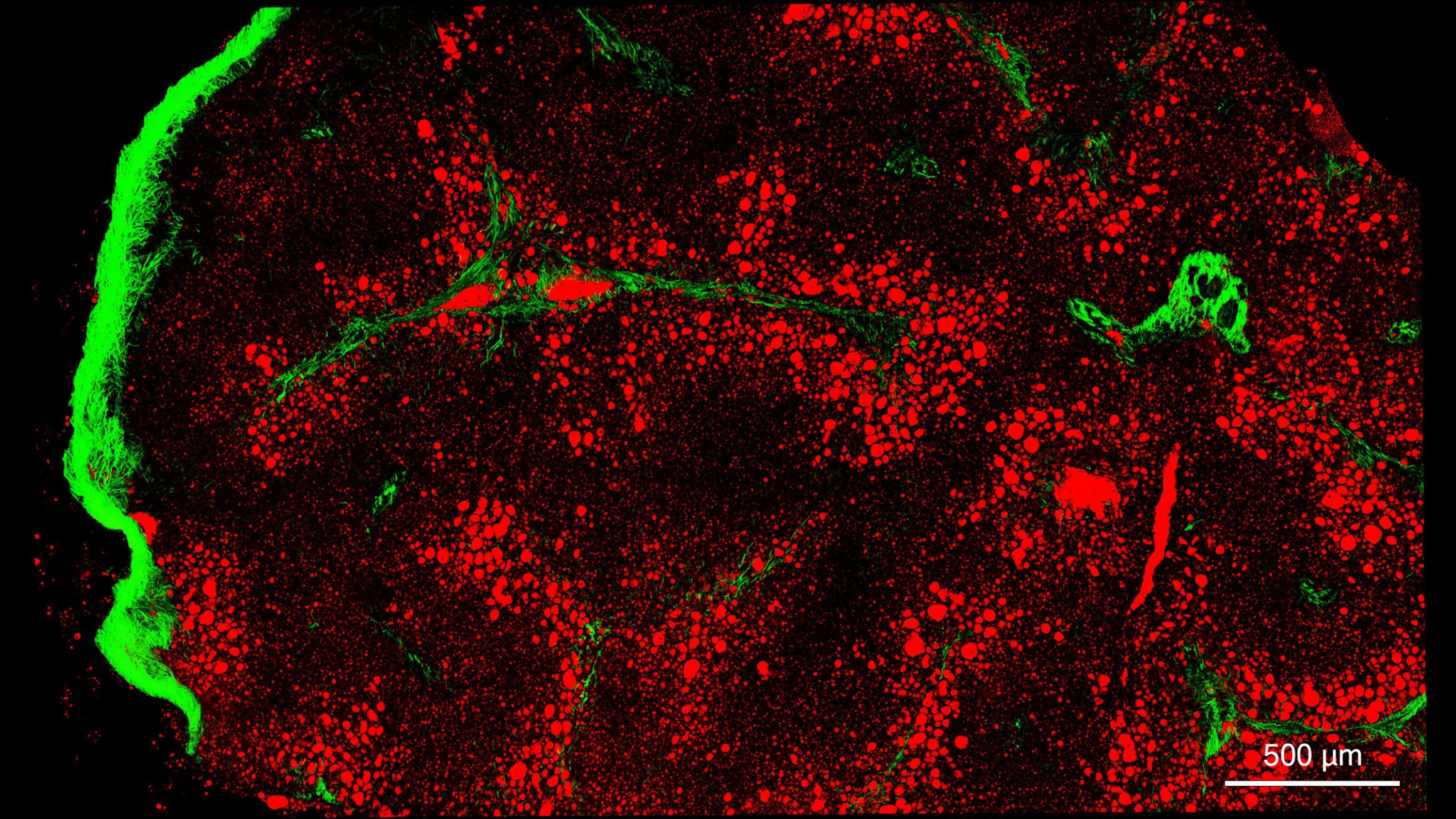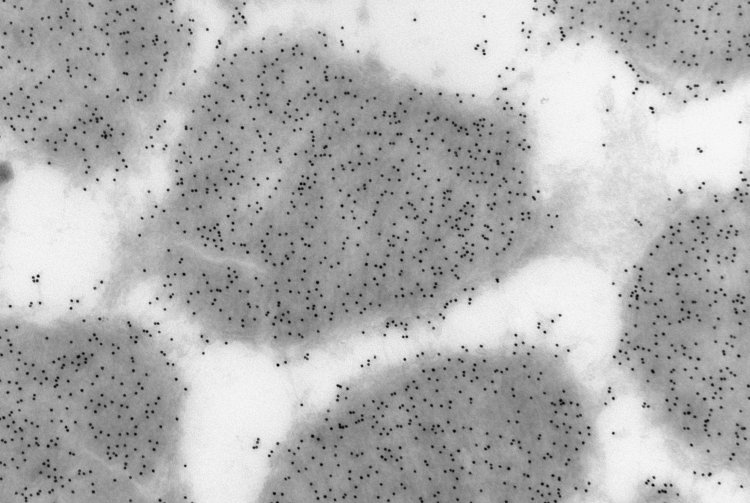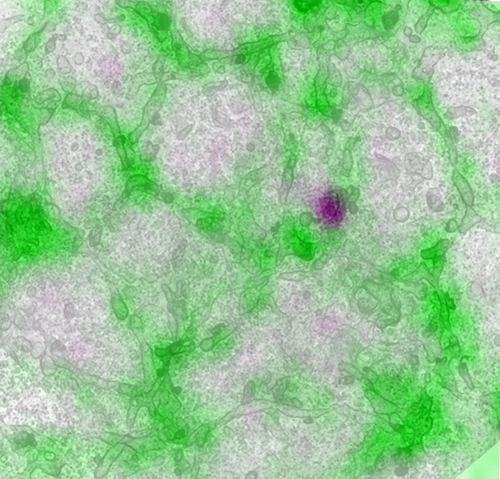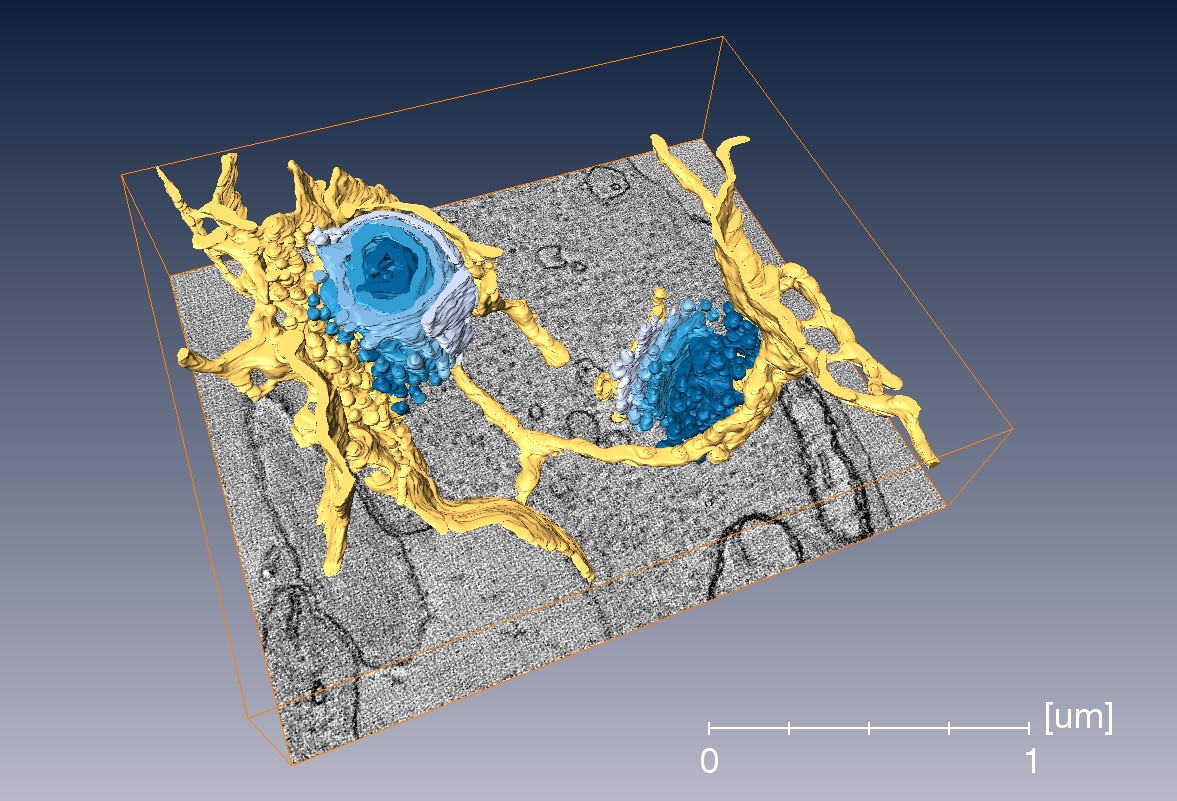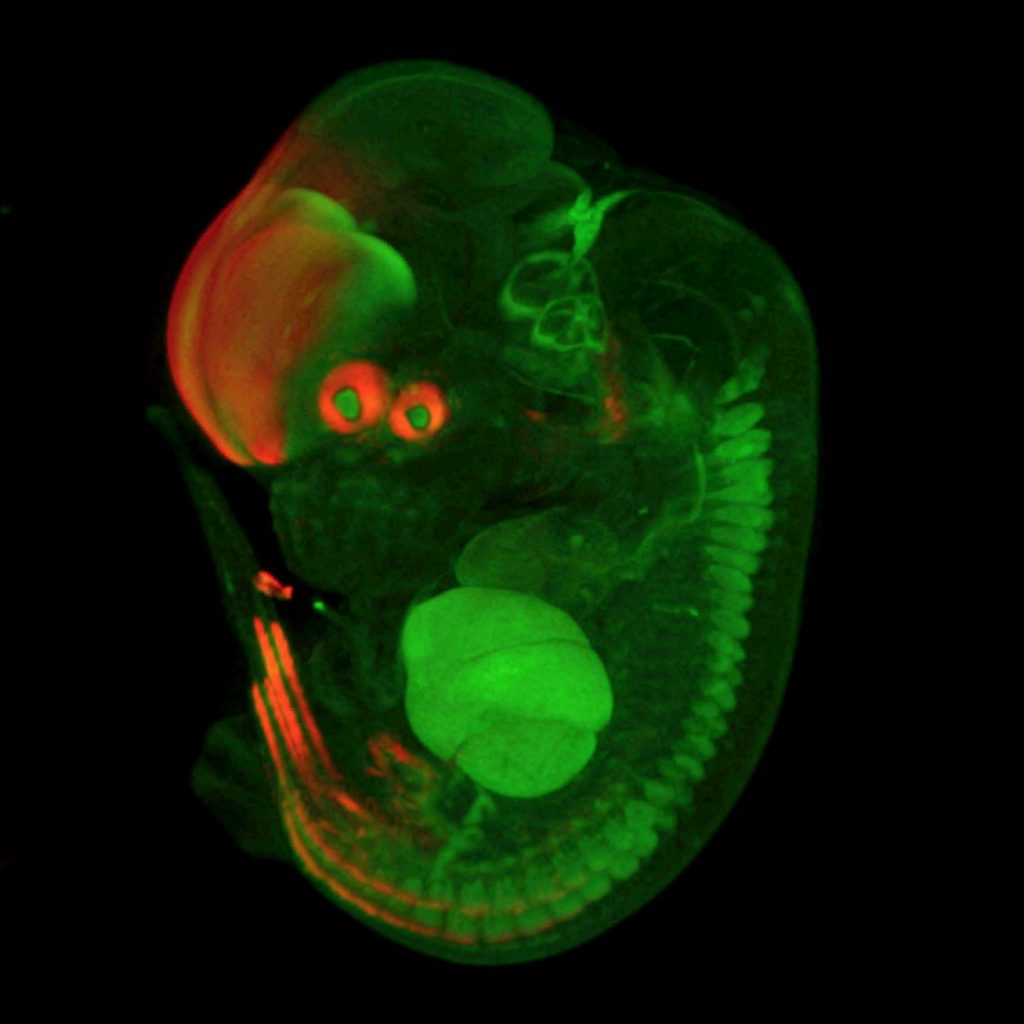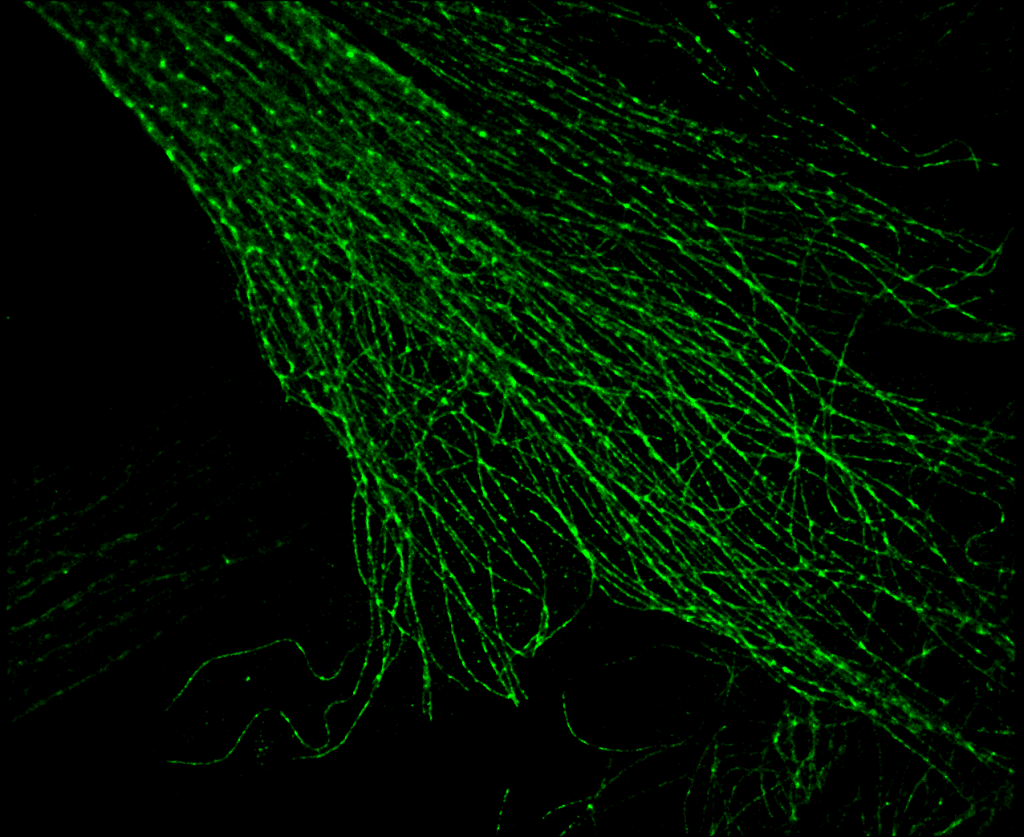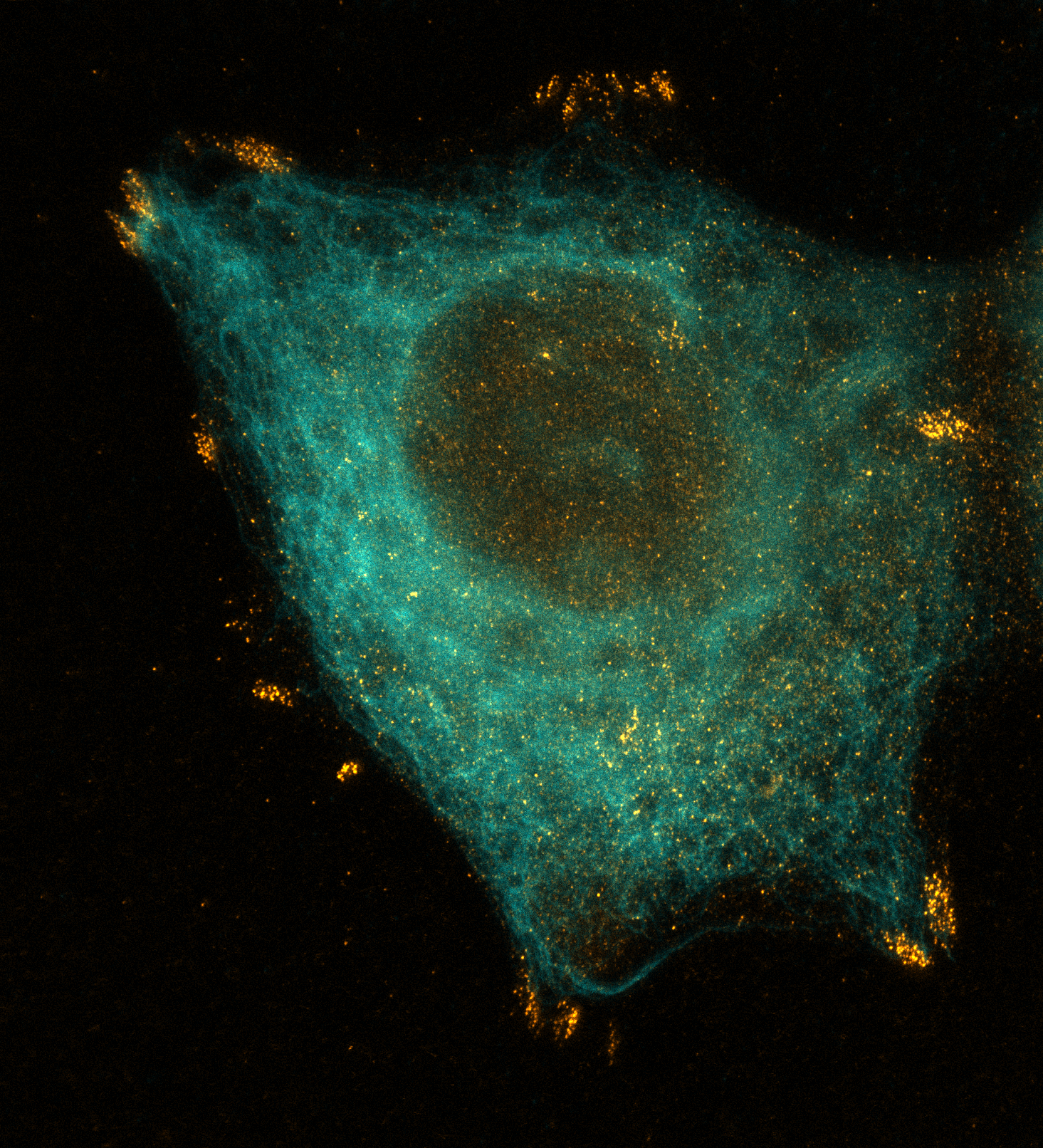Coherent Anti-Stokes Raman Scattering
CARS microscopy is one of the label-free multiphoton imaging techniques. It allows for chemically specific imaging of biological materials without use of fluorescent labels. CARS is a three-photon nonlinear optical process where two synchronous and spatially overlapped optical beams are used to probe molecular vibrations in the sample material.
CARS microscopy is offered in Biomedicum Imaging Unit (BIU) at the University of Helsinki.
